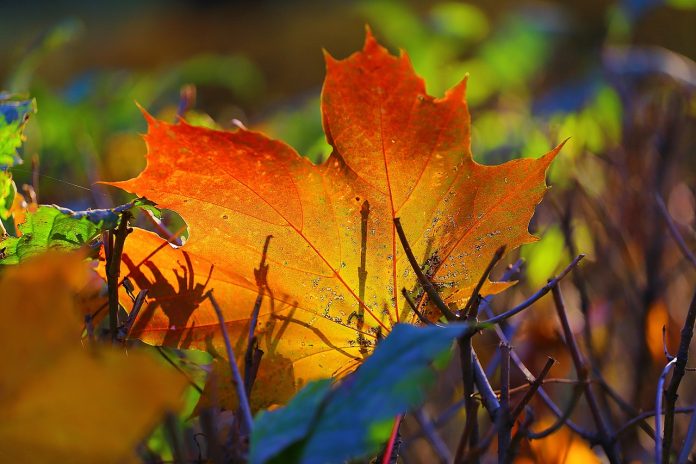Fall is a great time to plant trees and shrubs. You can take advantage of sales at your local nursery and add some dimension to your yard’s landscape. You can even give your new plants a jump start for next spring with proper preparation.
Planting new trees and shrubs in the fall takes advantage of favorable soil temperatures and moisture conditions that promote root growth. It also gives them a chance to establish root systems before they need to collect water and nutrients for leaf production.
However, you also want to be mindful to select healthy, vigorous tree and shrub varieties and hold off on slow-to-establish species.
Planting trees and shrubs in the fall
More and more gardeners are turning to fall planting due to the shift in the seasons. In recent years, springs have become shorter due to hotter, drier weather, while falls have been extended with milder weather. From mid-August to mid-October, moderate air temperatures, stable soil temperatures and ideal moisture levels promote rapid root development.
Most container-grown and balled and burlapped deciduous trees and shrubs sold at garden centers are ideal for fall planting, as they already have well-developed root systems and are capable of growing in cooler soil temperatures. Conifers prefer slightly warmer soil temperatures and are better planted from mid-August through September.
Test the soil. Testing the soil is imperative to successful fall planting. You want to make sure the temperature is at least 55 F at six inches deep before moving forward. If soil temperature is ideal, you can move forward with a drainage test.
Drainage test. Regardless of when they are planted — spring or fall — many plants die during the first few months from too much or too little water. You can check the soil drainage in your desired location by digging a small hole, filling it with water and keeping track of how long it takes for the water to disappear. If the water is gone in an hour or less, the soil is too sandy and won’t hold much water. If it takes more than a day for the hole to drain, the soil will hold too much water.
Location. Before you select a tree or shrub to plant this fall, you need to consider the location where you’ll be planting it. You want to make sure you choose a plant that can tolerate the amount of sun exposure, wind exposure and available space. You can ask professionals at your local garden center to help you choose the right plant for your site.
How to plant trees and shrubs in the fall
Once you’ve tested the soil, checked for good drainage and selected a species ideal for your yard, you’re ready to plant.
- Dig the hole. Make sure you only dig your hole deep enough for the root ball to fit into. You can estimate the depth by measuring from the trunk flare of the plant to the bottom of the root ball. One of the most common mistakes is digging the hole too deep. Next, make sure to dig your hole two to three times as wide as the root ball at the same depth.
- Loosen the roots. Gently loosen any roots that are root bound. When roots run out of growing space they can become wrapped tightly around the rootball of plants from containers or they begin circling the bottom of the root ball. This must be done before planting, otherwise, the roots may not spread out and become established in their new space.
- Remove wire, string and burlap covering the top half of the root ball.
- Set the plant so the trunk flare is one to two inches above the existing soil level.
- Use native soil to backfill around the roots. If the soil is sand or clay heavy, balance it out by mixing in peat moss or compost.
- Take your time backfilling. Water the soil once halfway through, allow it to drain before finishing the backfill and water the rootball and planting area thoroughly after backfilling is done.
- Water to supply about one inch per week, including any rainfall, until the ground is frozen.
- Wrap the trunks of thin-barked, young trees in late November to prevent frost cracks, sunscald and animal damage. You can remove the wrap in March.
- Add a three- to four-inch layer of mulch after you’ve finished planting. The mulch will lock in moisture and help prevent damage from wide soil temperature fluctuations. Apply materials such as compost, shredded bark or straw in late November or early December, after the plants are fully dormant and the soil is cold.
Plant it in the fall
When choosing trees and shrubs to plant in the fall, consider these tips:
- Choose moderately sized deciduous trees and most shrubs that will establish easily.
- Choose healthy, container‐grown or ball and burlapped plants.
- Conifers will do well if planted before the end of September while the soil is warm.
- Most deciduous shrubs will establish easily in the fall, but wait until spring to plant broad- and narrow-leaved evergreens.
Species to plant
- Alder
- Amur cork tree
- Ash
- Buckeye
- Catalpa
- Crabapple
- Eastern redbud
- Elm
- Hackberry
- Honeylocust
- Horsechestnut
- Kentucky coffeetree
- Linden
- Most maples
- Pine
- Spruce
- Sycamore
Save it for spring
- Birch
- Cherries
- Dogwood
- Ginkgo
- Hemlock
- Magnolia
- Oak
- Plum
- Poplars
- Red Maple
- Sweetgum
- Tuliptree
Happy planting!
Planting trees and shrubs during the fall season allows plants to establish better roots systems and struggle less during a hot, dry summer. You can be successful this fall by paying attention to the details before and during planting.










